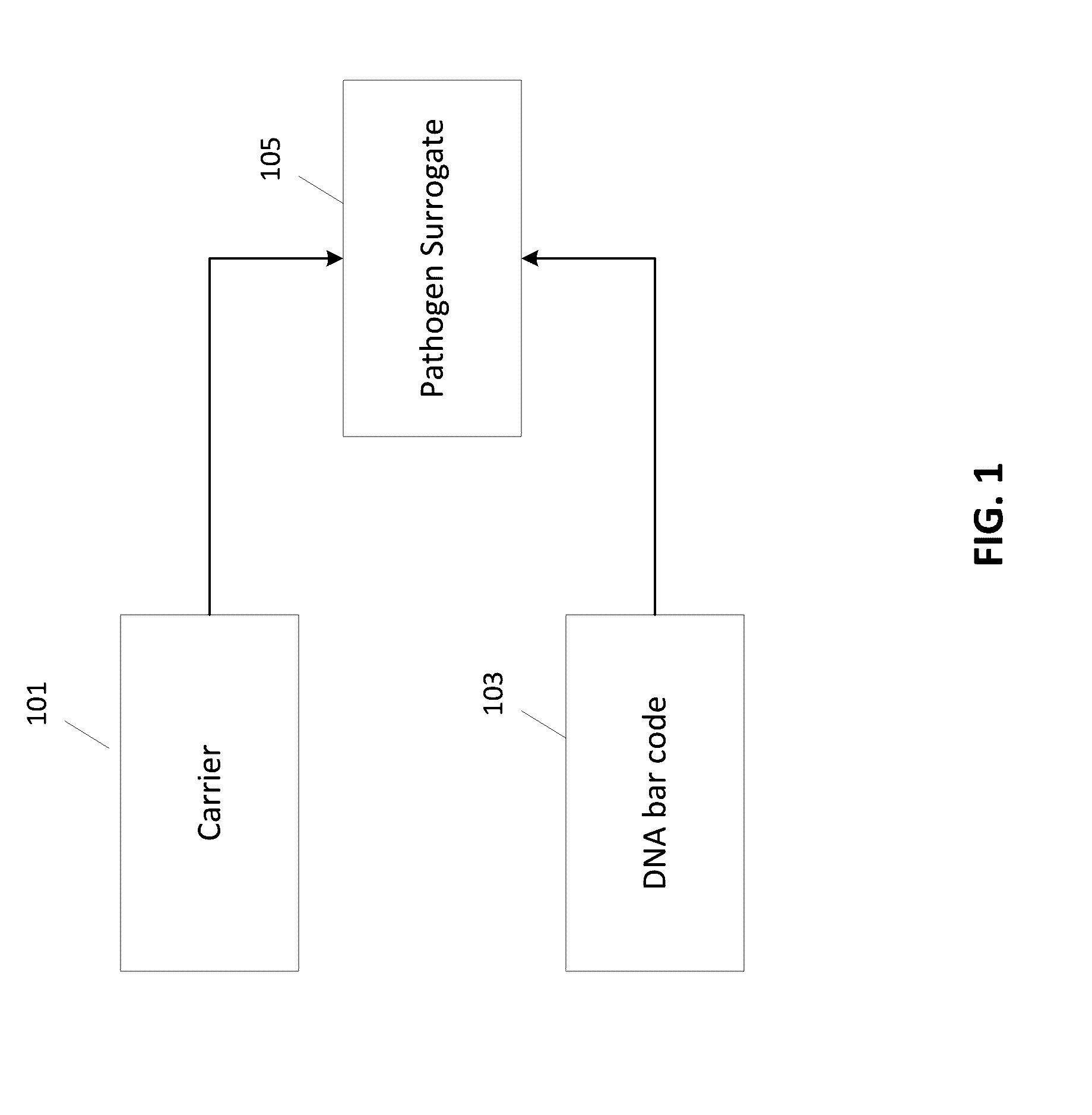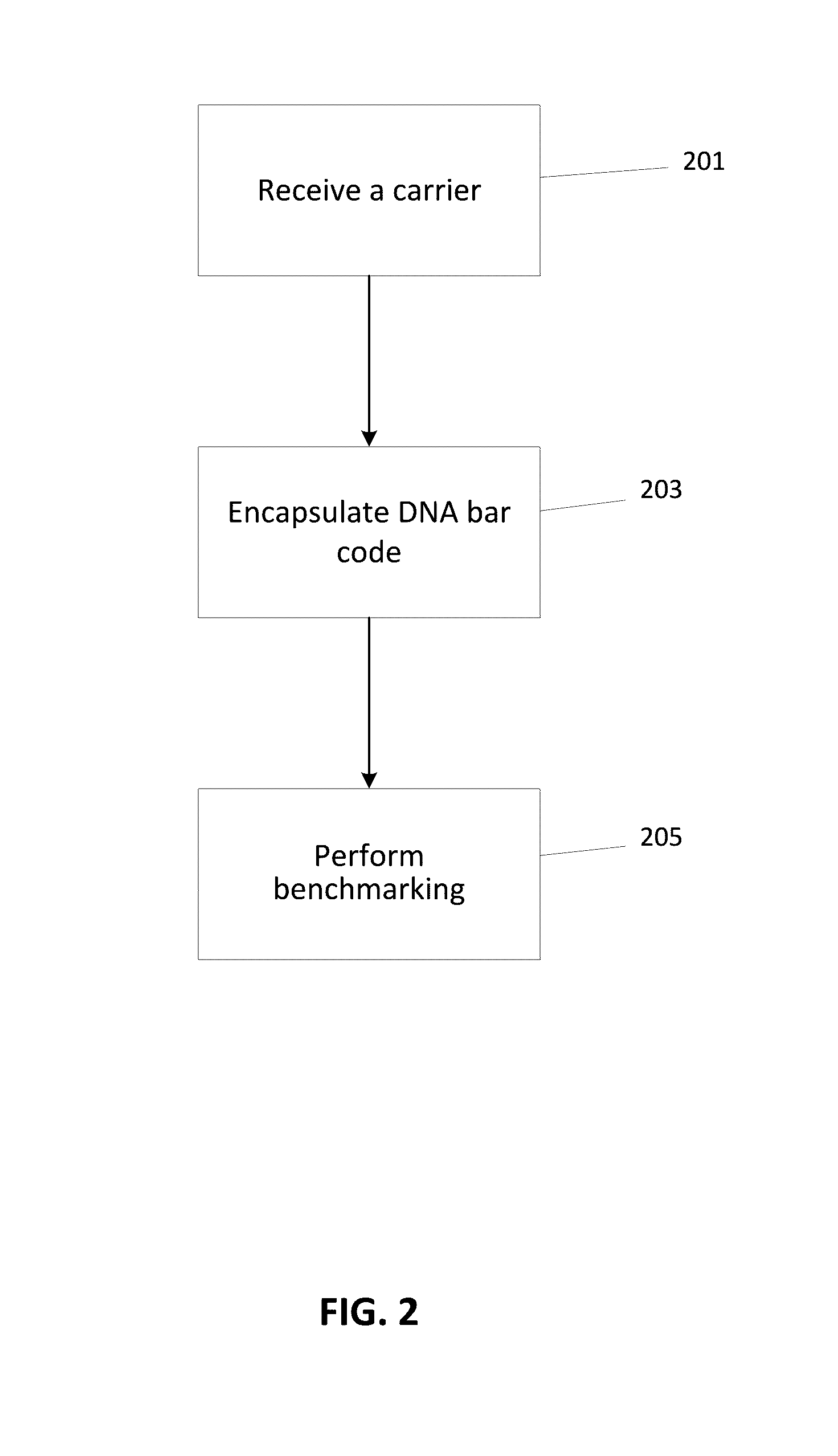Pathogen Surrogates Based on Encapsulated Tagged DNA for Verification of Sanitation and Wash Water Systems for Fresh Produce
a technology of pathogen surrogates and tagged dna, which is applied in the direction of instruments, investigating sterilization degree, and analysis using chemical indicators, etc., can solve problems such as foodborne illness, product spoilage, or human health threats, and achieve the effects of reducing shelf life, reducing foodborne illness, and posing a threat to humans
- Summary
- Abstract
- Description
- Claims
- Application Information
AI Technical Summary
Benefits of technology
Problems solved by technology
Method used
Image
Examples
Embodiment Construction
[0014]The DNATrax technology described herein is already used in aerosol formulations for simulation of bio-threat microparticles in modeling terrorist attacks, and for tracking and quantifying particulate migration. See for example, U.S. Pat. No. 8,293,535 and U.S. Application 2014 / 0057276 on the formation of DNA tagged microparticles in this context. Related U.S. Application 2014 / 0272097 discloses DNA marking of items for authenticating the items, while U.S. patent application Ser. No. 14 / 599,315 extends the use of such materials to the problem of tracing the origin of food products. However, none of these functions relate to the use of such DNA bar code or tag (“bar code” and “tag” are used interchangeably herein) to the verification of sanitation and wash water systems for fresh produce. Although the following discussion will be mainly in the context of food processing, it is also relevant in other application such as disinfection and sanitation of healthcare facilities, medical...
PUM
| Property | Measurement | Unit |
|---|---|---|
| water soluble | aaaaa | aaaaa |
| water-soluble | aaaaa | aaaaa |
| functionally ferromagnetic | aaaaa | aaaaa |
Abstract
Description
Claims
Application Information
 Login to View More
Login to View More - R&D
- Intellectual Property
- Life Sciences
- Materials
- Tech Scout
- Unparalleled Data Quality
- Higher Quality Content
- 60% Fewer Hallucinations
Browse by: Latest US Patents, China's latest patents, Technical Efficacy Thesaurus, Application Domain, Technology Topic, Popular Technical Reports.
© 2025 PatSnap. All rights reserved.Legal|Privacy policy|Modern Slavery Act Transparency Statement|Sitemap|About US| Contact US: help@patsnap.com



